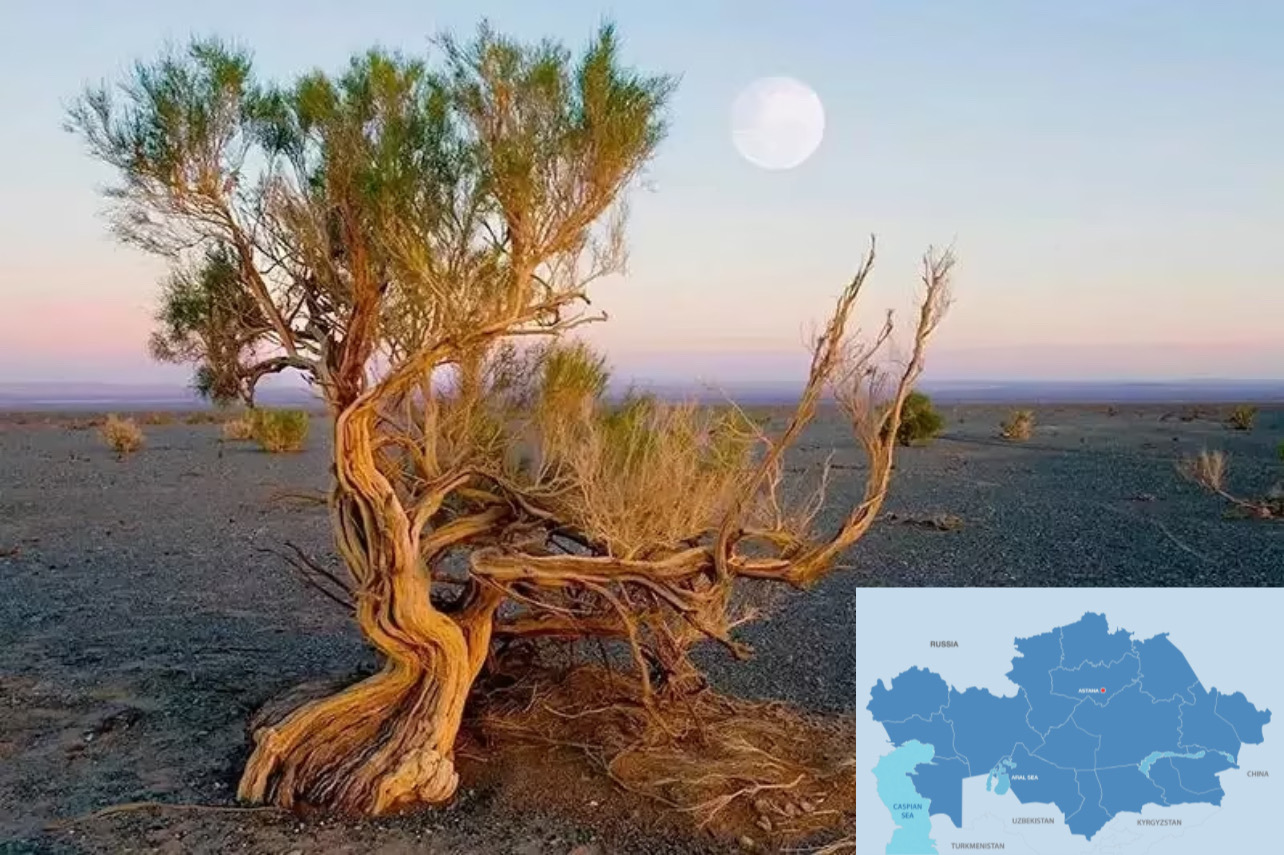ASTANA – The United States Agency for International Development (USAID) organized an expedition to the dried bottom of the Aral Sea and a donor coordination conference on May 21-26 to draw attention to the Aral Sea disaster and foster dialogue and knowledge sharing among organizations working in the region, reported USAID on May 22.

Saxaul trees. Photo credit: Kazinform. Click to see the map in full size. The map is designed by The Astana Times.
As part of the expedition, a group of international development representatives and government officials visited several afforestation projects in the region, including Aralsk, Barsakelmes, Akespe, and the USAID Oasis sites, currently under development.
“Located 50 kilometers from Karateren [village] in western Kazakhstan, the USAID Oasis is a demonstration site where USAID tests black saxaul under various growing conditions to determine the shrub’s viability as a species to help revive the local ecosystem. The oasis was launched in 2021 in collaboration with the Executive Directorate for Saving the Aral Sea (ED-IFAS) in Kazakhstan, which provides on-the-ground expertise to the project,” reads the report.
A donor coordination conference on May 25-26 brought together Kazakh government officials and international donor organizations to review past and present Aral Sea projects to determine best practices and increase cooperation among regional initiatives.
The expedition and donor coordination conference included representatives from the Kazakh Ministry of Ecology and Natural Resources, the akimat (administration) of the city of Kyzylorda, representatives of national and international non-governmental organizations, and officials from the donor community, including the World Bank, Asian Development Bank, and the United Nations Development Program.
The Aral Sea water volume shrunk nearly tenfold from its original size in 1960. The environmental devastation in the region has decimated the ecosystem and negatively impacted local communities that used to depend on the sea for fishing and are now subject to frequent sand and dust storms that affect both humans and livestock.
On May 14, it was reported that since the start of this year, the water level in the Aral Sea has increased by nearly 1.5 billion cubic meters, rising to 95 centimeters for the first time in many years.
